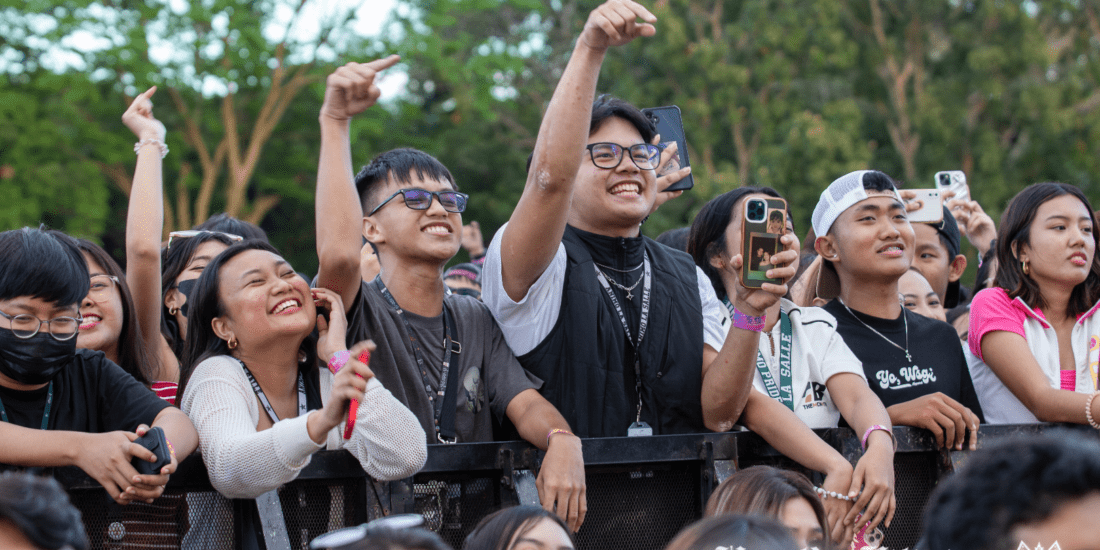Art meets politics on CPC’s webinar, Sining Kultura & Zine of the Times
Shining a spotlight on art as a form of political expression, Communication Program Council (CPC) invited some of the big names in the local art scene for their webinar titled Sining Kultura & Zine of the Times, held on November 24, via Zoom and Facebook Live.
Featuring artists such as Alburoto, Kirsten Salazar, Malayo pa ang umaga, and Tarantadong Kalbo, the webinar unmasked some of the faces behind the social media handles we know and have come to support, revealed the process behind their pieces, and explored the power of art in the ever-volatile political landscape – and what it means for us, who are living through it.
Art as response to political issues
When we say Tarantadong Kalbo (TK), what comes to mind is probably the famous #Tumindig artwork, which made rounds on social media both as a piece and as a template. The small clenched fist who remained upright amid the sea of “bowed-down” people was well-known for the powerful message that stood by its title – a sentiment that was picked up by netizens, influencers, organizations, and fellow artists alike – until it evolved into a movement.
This was only one of the prominent artworks made by TK, who works as an animator for Linya-linya as his day job. Looking back, the TK page itself did not even start off as a platform for social commentary and satirical pieces to begin with – it was supposed to be a page for art dumps, memes, and occasional fan art – at least, until the pandemic struck.
“The pandemic drastically changed the course of my komiks journey,” TK shared. “So nagkaroon siya ng gradual shift, kasi hindi maganda yung nangyayari sa paligid natin. The bad things started to unravel most especially how the government handled it. Alam nating lahat nakaka-frustrate yung the corruption and – basta, sobrang dami.”
Drawing the line
On the other hand, the speakers expressed different takes when it comes to the nature of art being inherently or intentionally political, as there are different types and context to always consider when making art.
For multidisciplinary artist Kirsten Salazar, the observable present is a big factor when considering the political aspect of art, relating it to her two-step process with experimental photography that observes and captures pertinent issues today.
“Yung world natin is big pool of politics naman talaga. And art, sinasabi ng mga ibang site, is not inherently political, pero yung art natin ngayon is political and art ng generation natin ngayon is political. Siguro noon hindi, kasi wala pa silang ganoong konsepto noon […] pero ngayon na sobrang – lahat ng bagay ngayon kadikit na pulitika,” Salazar said.
Visual artist Alburoto shared a similar sentiment, whose works are mainly categorized within social commentaries.
“Everything is political. Lahat ng desisyon natin, parang napagdesisyunan na ng mga naunang tao satin. Bale nakasunod nalang tayo. So ayun, yung mga theories na nagather natin, mga scientific facts, yung stigma, yun nga – yung sensibilities ‘din – yung pinroject satin ng society is political. So dapat may kakayahan tayong mag-comment sa ating society, kasi part tayo nito.”
Meanwhile, anonymous zine writer and poet Malayo pa ang umaga (MPAU) opted to reframe the topic instead, focusing on art and politics as a matter of “when”.
“Pag may mga ganito pong tema, parati ko siyang nilalapitan ng isang tanong. ‘art is political’...pero para sa’kin po, ang tinatanong ko lagi sa sarili: kailan ba dapat maging pulitikal ang sining? Siguro e’to masasagot ko. Ang sagot diyan: ngayon na. Sa hinihingi ng pagkakataon. Sa pagkakataong talamak ang pang-aapi at panlulupid, higit na kailangan ang sining,“ the anonymous artist said.
Art as agent of change
There is a difference between protest art and art that responds to its environment, TK said, which makes it inherently political. He reiterated that art, no matter how political it is, is still art — and it still needs to be accompanied by action.
“Change comes from action. It comes from putting our money and our bodies where our art says they are,” the artist shared.
In regards to art being “viewed” as a weapon, MPAU also emphasized that art could be likened to a match instead – allowing the audience to think, and opening new windows to different perspectives.
“Madalas kasi inaasahan natin ang art kumbaga, parang may magical properties na pag nakakita ka ng art, instantly, mababago yung pananaw mo. Or kung ano man yung kinikilingan mo. […] Una sa lahat, bakit ang art ay hindi sandata. Kasi para sa akin po, naniniwala ako na yung sandata sa pagbabago at pagkilos na gusto natin ay tayo. Yung tao. Yung viewers at yung readers. Hindi mismo yung sining,” the artist noted.
***
In a time where art and politics meet in the blank canvas, what we do next still lies in the intent of the beholder. As the existence and production of zines continue to provide more avenues for artists to express and connect with people, our role as audience is also challenged as tough times call for more than just a mere awareness, but real action.
Slider taken from Sining Kultura & Zine of the Times Facebook Live, at CPC Official Facebook Page.





